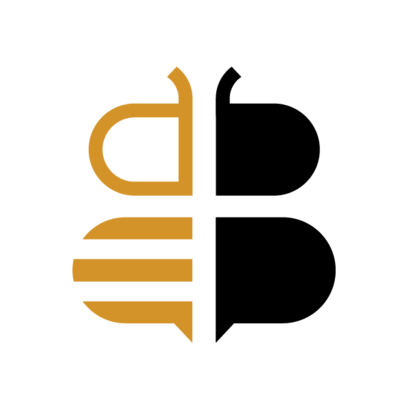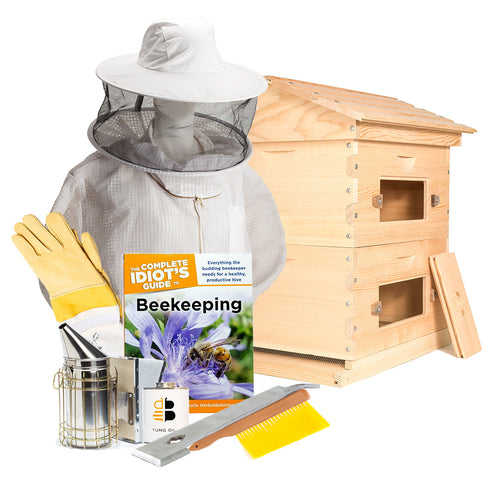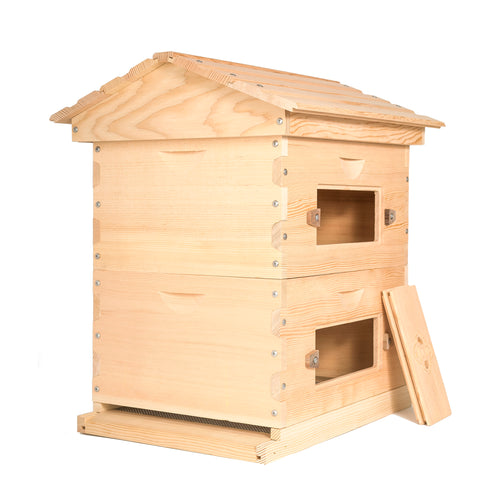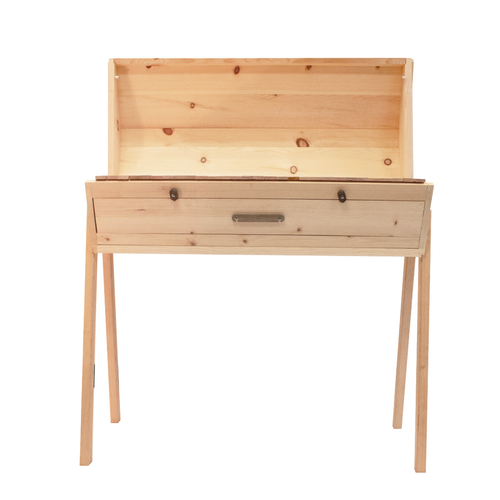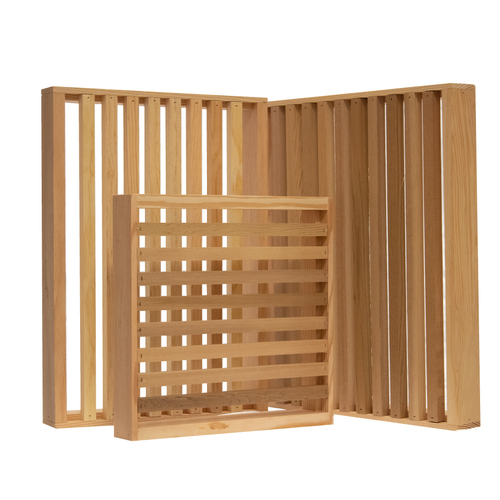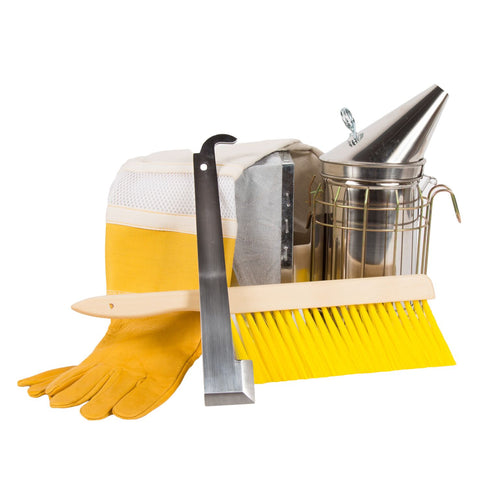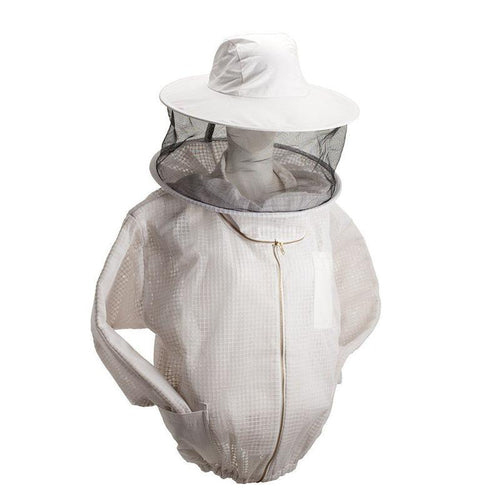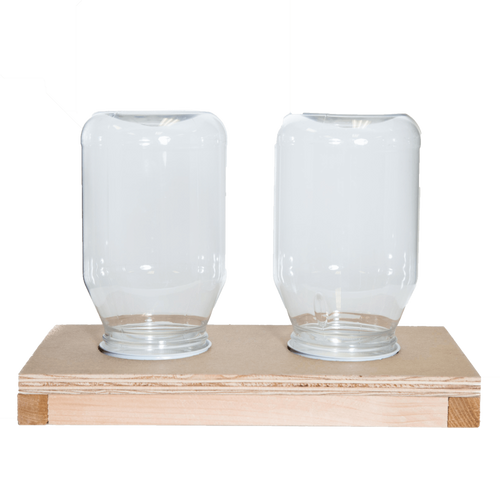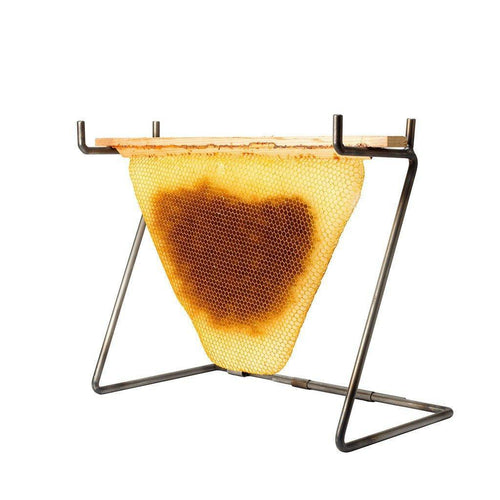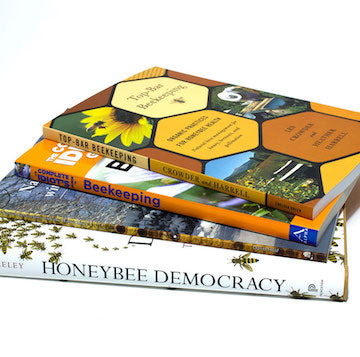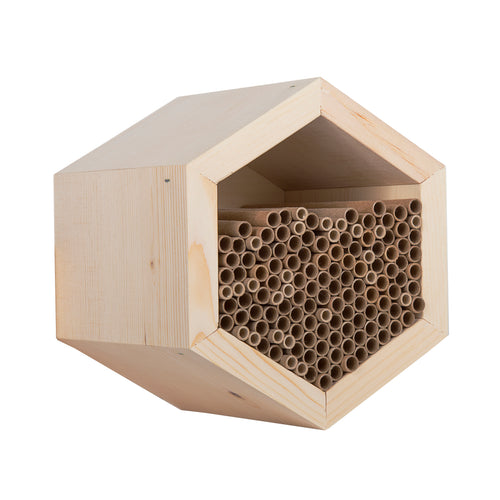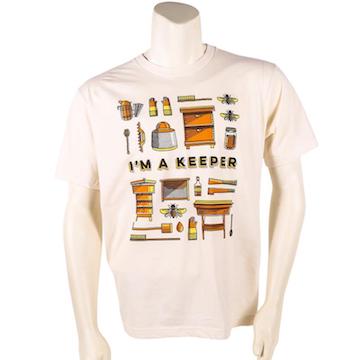
We imagine that Ralph Waldo Emerson penned the famous quote, “The earth laughs in flowers” while sitting in the midst of a brilliantly blooming pollinator garden. As the cherry blossoms are starting to flower in the Pacific northwest, we are getting excited to share along in the laughter this spring by planning out our beautiful, buzzing pollinator-friendly gardens.
If you’ve ever wondered which plants you can cultivate to attract pollinators, this blog series is perfect for you. Planting for Pollinators is your monthly guide to building out beautiful pollinator gardens according to your region, following the natural duration of the honey bee foraging season from March to October. We will post different varietals native to your region each month, according to the seasonal timing in which they should be planted. Our goal is for you to look out across your pollinator garden on the cusp of fall and feel satisfied with all the flowers and pollinators that have come and gone.
The following flowers are planted in March to bloom in April and May.
Pacific Northwest
-
Salmon Berry (Rubus spectabilis) is a native perennial shrub that produces beautiful magenta buds in the spring and tasty berries in the summer. You can find them all along creeksides in the forests of British-Columbia to Oregon along the Cascade Mountain Range. This is a wonderful plant for early-mid spring bee food and late spring-early summer human snacks!
-
Broadleaf Lupine (Lupinus latifolius) Native to the Pacific Northwest from British-Columbia to Northern California, broadleaf lupine has beautiful blue flowers that bloom in late spring. This is an excellent perennial flower to plant in early spring.
 Nootka Rose. Photo from www.nwplants.com.
Nootka Rose. Photo from www.nwplants.com.
-
Nootka Rose (Rosa nutkana) This perennial rose is dappled all along the Pacific coast. It blossoms in late spring/early summer, then turns into rose hips. If you’ve never encountered rose hips, you’re in for a treat. These tiny fruits are high in vitamin C and can be infused in honey for a truly effective winter immune booster.
West Coast
-
California Poppy (Eschscholzia californica) Who doesn’t know this little spring and summer sweetheart? This bright orange flower heralds the glorious days of summer, and bees love it! It is an excellent drought-tolerant flower that grows well in many different soil types and has historically been used as a remedy for depression, insomnia, anxiety, and promote relaxation.
 Wooly leaf mountain lilac. Photo from www.calscape.cnps.org.
Wooly leaf mountain lilac. Photo from www.calscape.cnps.org.
-
Wooly Leaf Mountain Lilac (Ceanothus tomentosus) This evergreen perennial shrub is happiest in chaparral areas and grows well in clay. It has gorgeous blue flowers that bloom in spring and emit a heavenly fragrance.
-
Douglas Iris (Iris douglasianai) Native to Northern California’s coasts, this perennial beauty is a stately addition to a west coast pollinator garden.
Southwest
-
Desert Willow (Chilopsis linaris) This eye-popping flower is fast growing and, because of its adaptations to desert living, it is also drought resistant. Southwestern gardeners will find it easy to maintain
 Texas prickly pear. Photo from www.swtreesandturf.com.
Texas prickly pear. Photo from www.swtreesandturf.com.
-
Texas Prickley Pear (Oputia engelmannii) This native cactus is an abundant nectar source for honey bees, boasts gorgeous flowers, and is native to many regions of the southwest.
-
Blue Palo Verde(Parkinsonia florida) A lovely native, this spiny small tree is a wonderful food source for all sorts of wildlife--from deer to small mammals, and birds to honey bees. Blue palo verde has a high nectar flow, which promotes honey production!
The Rockies
-
Sand Verbana (Abronia fragrans) This plant boasts one of the sweetest-smelling perennial flowers in all of the rockies. Verbana is a superb addition to pollinator gardens.
 Sego lily. Photo from commons.wikimedia.org.
Sego lily. Photo from commons.wikimedia.org.
-
Sego Lily (Calochortus nuttallii) The indigenous Ute people called this flower “sego” and saved early Mormon settlers by teaching them to eat the bulbs when food was scarce. Today it is Utah’s state flower!
-
Yarrow (Achillea millefolium) This is one of the most versatile and useful flowers in all of North America! Not only is it wonderful food for honey bees, it is an excellent herb for human medicinal use. The leaves, when made into a topical poultice, can stop bleeding and has historically been used to treat nose bleeds. The flowers have also been known to make an excellent headache remedy, fever reducer, and boost for the immune system.
Texas
-
Golden Tickseed (Coreopsis tinctoria) This orange beauty can be found all along roadsides during spring. A sublimely showy flower, golden tickseed makes a beautiful addition to any garden.
-
Prairie Verbana (Glandularia bipinnatifida) These little purple beauties are an eye-catching addition to any pollinator garden, and are native to nearly all areas of the South!
 Texas blue bonnet. Photo from www.edenbrothers.com.
Texas blue bonnet. Photo from www.edenbrothers.com.
-
Texas Blue Bonnet (Lupinus texensis) No Texas pollinator garden would be complete without blue bonnets. If you’re a Texan, you probably already have a soft spot for these alluring indigo flowers. This variety grows well in the spring.
The Plains
-
Blue Dogbane (Amsonia tabernaemontana) Dogbane, and other milkweeds, are one of the most versatile nectar sources for pollinators, from honey bees to carpenter bees. Additionally, milkweeds are the only plant upon which monarch butterflies lay their eggs.
-
White Prickly Poppy (Argemone polyanthemos) Honey bees and native pollinators love this gorgeous white poppy. It grows well throughout the plains.
 Butterfly weed. Photo from commons.wikimedia.org.
Butterfly weed. Photo from commons.wikimedia.org.
-
Butterfly Weed (Asclepias tuberosa) This bright butterfly-attractant boasts beautiful bright orange flowers. This variety of milkweed is beneficial for pollinators and humans alike. Its root was chewed by native american peoples when fighting pleurisy.
Midwest
-
Purple Coneflower (Echinacea purpurea) This flower is native to the midwest and has gained popularity for its immune-boosting benefits! Bees love the flowers and humans love the medicinal properties of its roots, as can be seen in the vast array of echinacea products available.
 Green milkweed. Photo from www.prairiemoon.com.
Green milkweed. Photo from www.prairiemoon.com.
-
Green Milkweed (Asclepias hirtella) The varieties of milkweed are seemingly endless! These flowers are wonderful for honey bees and all pollinators.
-
Ohio Horsemint (Blephilia ciliata) This purple midwest native is a perennial flower that will not only please your honey bees, it will also attract many species of native pollinators and is deer-resistant.
The South
-
Indian Paintbrush (Castilleja indivisa) A beautiful member of the snapdragon family, you can find it all through the wilds of the South.
-
Wine cup (Callirhoe digitata) The cupped shape of this sweet purple flower makes it particularly attractive to bees. It can grow in prairies, on grassy slopes, and in wooded regions.
 Pink mimosa. Photo from www.discounttreesofbrenham.com.
Pink mimosa. Photo from www.discounttreesofbrenham.com.
-
Pink Mimosa (Mimosa borealis) You will never be short on fragrant breezes in your pollinator garden with this beautiful pink flowering shrub. Bees love the fluffy, fragrant flowers and sweet nectar!
Northeast
-
Allegheny Serviceberry (Amelanchier laevis) This native shrub is beneficial to nearly everyone who encounters it. Honey bees love to gather nectar from the clusters of fragrant white flowers, and their tasty berries are edible for both humans and birds, and are high in vitamin C.
 Eastern red columbine. Photo from www.delawarewildflowers.org.
Eastern red columbine. Photo from www.delawarewildflowers.org.
-
Eastern Red Columbine (Aquilegia canadensis) This alluring scarlet woodland wildflower is truly a show-stopper. Butterflies and bees love it and it is an eye-catching and impressive addition to a pollinator garden.
-
New Jersey Tea (Ceanothus americanus) This shrub bursts with beautiful fluffy white flowers in late spring. Interestingly, its leaves were made into a tea and drank during the Revolutionary War.
The North
-
Black Hawthorne (Crataegus douglasii) This short and shrubby hawthorne is a haven of berries for birds and offers delicious nectar for honey bees. Hawthorne honey, anyone?
-
Wild Comfrey (Cynoglossum virginianum) Not only is this lakeside plant wonderful for honey bee food, but the leaves have historically been made into a topical poultice to treat insect stings, bites and fight skin inflammation. Essential for any beekeeper’s garden.
 Lance leaf coreopsis. Photo from www.discoverlife.org.
Lance leaf coreopsis. Photo from www.discoverlife.org.
-
Lance Leaf Coreopsis (Coreopsis lanceolata) These little flowers will add a spray of sunny yellow to your pollinator garden. Honey bees and butterflies love them!
Planting for Pollinators’ Regional Key
Pacific Northwest- WA, OR, Northern CA, ID
West Coast-CA
Southwest- NM, NV, AZ, West TX
The Rockies- UT, CO, WY
Texas
The Plains- KS, OK, NE, IA, MO
Midwest- OH, IL, IN, KY, WV
The South- LA, MS, AL, GA, NC, SC, VA, FL
Northeast- ME, NH, VT, MA, CT, NY, DE, RI, PA, MD, NJ
The North- MT, ND, SD, MN, MI, WI

